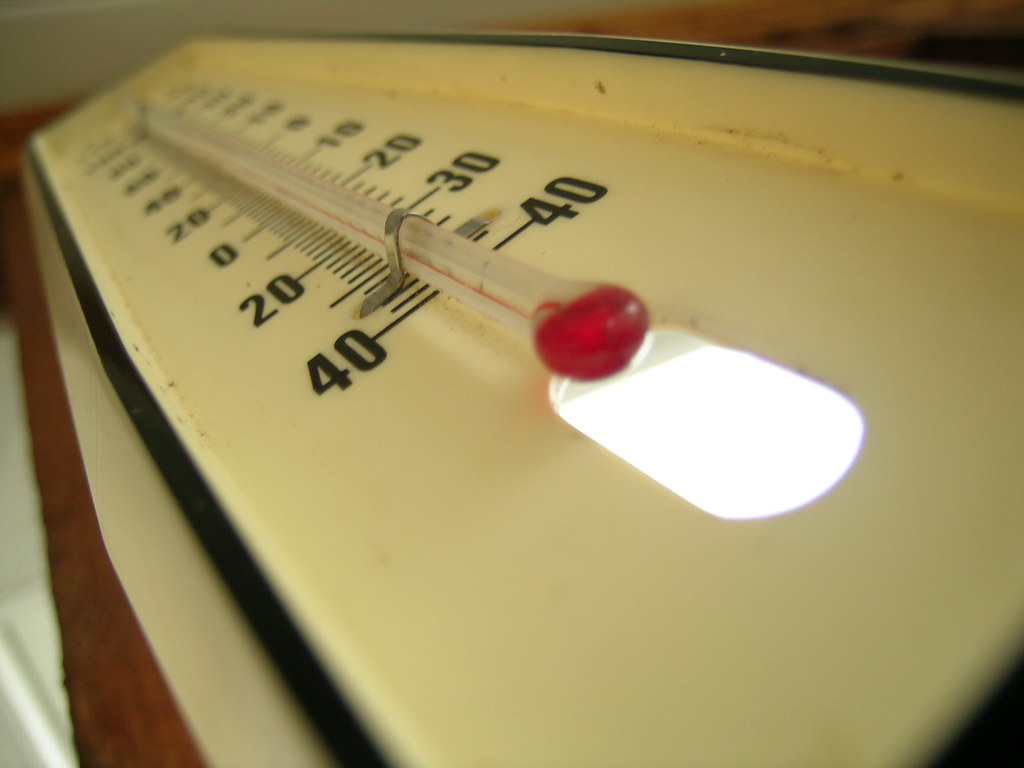The very simple answer to this is to ensure you are wearing the right thermal protection.

Thermometer © jessicamullen
- You’ll remember from your first diving course that in water you lose heat around 20 times faster than you do on land. That means that in 30-degree air temperature you would most likely be sweating, but in 30-degree water, things would change quite quickly. Initially, it would feel like a lovely warm bath, but as the water conducts heat away from you, you will soon chill.
- Choosing the correct exposure suit for the temperature you are diving into is paramount to your comfort; diving is not much fun when you are cold. If you are cold you will use your air quicker; lose too much heat and hypothermia is a very real risk. There are two main choices of protection, wetsuits, and dry suits.
- Wetsuits are used in more temperate water temperatures and work by trapping a layer of water between you and the suit. Your body warms this water, and the suit traps it which stops heat being taken away from you. This is the reason a wetsuit needs to be snug; baggy ill-fitting wetsuits allow water to flow through and out of the suit carrying your body heat with it. Wetsuits come in varying thicknesses and offer protection in the 10-30 degree temperature range. The material used for a wetsuit is neoprene. Neoprene is essentially a layer of foam bubbles. These bubbles are an airspace which will compress as the water pressure increases as depth. Their compression will speed your descent, and you will need to offset this change in buoyancy. The thicker the wetsuit, the greater the effect. The reverse happens as you ascend.
- Dry suits are used in cooler temperatures and keep you warm by keeping you dry. The layer of air trapped in the suit is heated by your body and stays there. Clothing can be layered underneath the suit for extra warmth, so you need to make sure a drysuit is not too snug to allow for this. Seals at the neck, ankles, and wrists are designed to keep water out. Drysuits are often used from temperatures of 18 degrees and are a certainty from 10 degrees downwards. As dry suits are an extra air space, they do need to be equalised. An additional hose attaches to the suit from your regulator, and there is a dump mechanism in the suit so that you can regulate your buoyancy. It is not difficult but it does need some extra training.
- In warm climates, divers sometimes choose to dive without a suit and while this is a personal choice I would ask yourself how long you would be comfortable like this should current take you or if you find yourself separated from the group and need to wait on the surface for an extended period.
- Where you dive will determine what you choose to use to keep warm. Remember seasonal variations and get local knowledge on thermoclines too. You’ll want to make sure you are warm enough to be comfortable at the coldest temperature you will experience on a dive.
- A top tip learned from experience is that a hood can make a remarkable amount of difference to your thermal comfort. Hoods are both a cheap and an effective way to reduce your heat loss.
- Regardless of what you are wearing, if you are shivering you have entered the early stages of hypothermia; this is your body’s way of generating heat, you need to get out the water and warm up, change into dry clothes and drink hot fluids.
- A final thought is that staying warm is not just a consideration while diving. Stay warm before you dive with the appropriate winter woollies. As if you needed an excuse, a hearty plate of hot food with lovely carbohydrates before a dive will have your body generating heat. At the end of the dive, take steps to rewarm yourself as a priority. Change clothes, add extra layers, whatever you need, and then you can deal with your gear. Plenty of hot fluids, soup or more hot food will help too. You’ll be thankful you did particularly if you are planning a second dive.